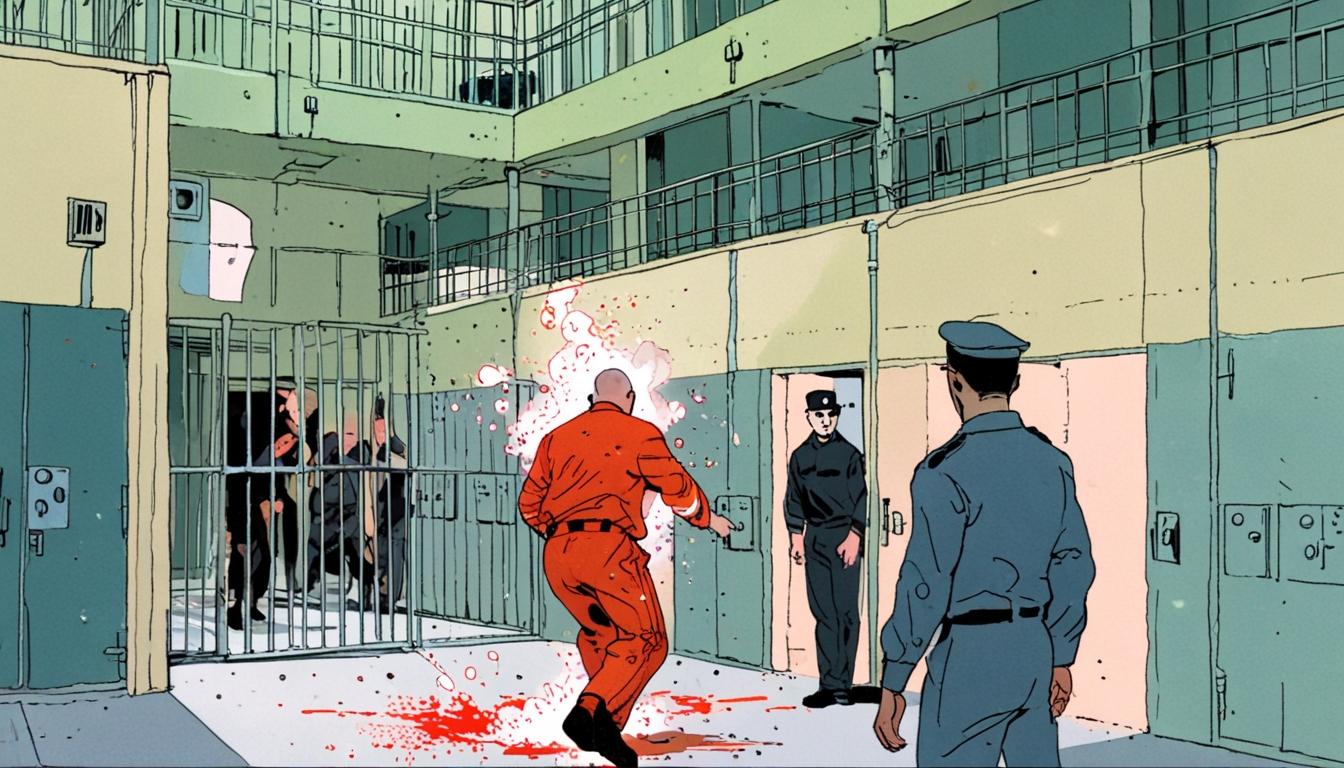Southport killer Axel Rudakubana's recent assault on a prison officer at HMP Belmarsh has once again spotlighted the escalating violence within one of Britain's most notorious prisons. Already widely recognised for housing high-risk offenders, including Islamist extremists and violent criminals, Belmarsh has come to be referred to as ‘Hellmarsh’ due to its tumultuous environment.
Rudakubana, imprisoned for three murders and ten attempted murders, attacked a prison officer with scalding water last Thursday after an incident purportedly stemming from a perceived slight involving food. The officer was briefly hospitalised following the incident, which has reignited discussions about safety standards and inmate behaviour in the facility. Once a hospital wing, where Rudakubana was being held, the scene now mirrors a broader pattern of serious violence recorded at the prison.
The last inspection reported 290 violent incidents at Belmarsh in the year leading up to March 2024, which signifies a 27% rise in violence across UK prisons, attributed largely to overcrowding and resource constraints. Within this tally, 103 assaults on staff were noted, with 11 classified as serious, highlighting the difficulties staff face in managing inmate behaviour amid mounting tensions.
Rudakubana’s attack is just one incident in a concerning series. Belmarsh has housed notorious figures like Hashem Abedi, responsible for the Manchester Arena bombing, and Aklakar Rahman, who expressed a desire to kill a prison officer. The prison environment fosters a type of gang culture, particularly involving Islamist extremists, who often exert influence over other inmates. A former inmate recounted how newly arrived prisoners are frequently groomed into adopting extremist ideologies, thus complicating rehabilitation efforts within the prison.
Charlie Taylor, HM Chief Inspector of Prisons, has recently commented on Belmarsh’s operational management, describing it as relatively safe compared to other facilities. However, he acknowledged that the risk of violence remains high, particularly due to Islamist gang pressures and a lack of cohesive engagement in prisoner rehabilitation. The grim conditions of the prison, including unsanitary facilities and limited time out of cells for many inmates, further exacerbate tensions and contribute to the atmosphere of fear and aggression.
Reports suggest that inmates often find ways to circumvent the security measures in place, with a survey revealing that a significant proportion considered it easy to access illicit drugs and alcohol—a troubling indicator of the challenges faced by prison management. The inspection found that around 60% of inmates were on remand, while many others were serious offenders housed in the high-security unit, which itself is described as "a prison within a prison."
Shadow justice secretary Robert Jenrick has expressed alarm over Rudakubana's incident, labelling it as the third critical security failure in a high-security environment. This has drawn parallels to previous violent outbursts in other institutions, including an attack by Hashem Abedi, who injured three officers using boiling oil. Such comparisons heighten concerns about systemic failings in the management of violent offenders within Britain’s prison system.
As the landscape of prison safety continues to shift under the strain of overcrowding and violence, the case of HMP Belmarsh serves as a stark reminder of the challenges facing the UK's correctional facilities. The increased incidents of violence and the sociological factors contributing to radicalisation among inmates suggest that without significant reform, prisons may continue to encounter serious disturbances.
Reference Map
- Paragraph 1: [1]
- Paragraph 2: [1], [2], [3]
- Paragraph 3: [6], [4]
- Paragraph 4: [1], [4]
- Paragraph 5: [1], [7]
- Paragraph 6: [6], [1]
- Paragraph 7: [5], [1], [6]
- Paragraph 8: [1], [1]
Source: Noah Wire Services
